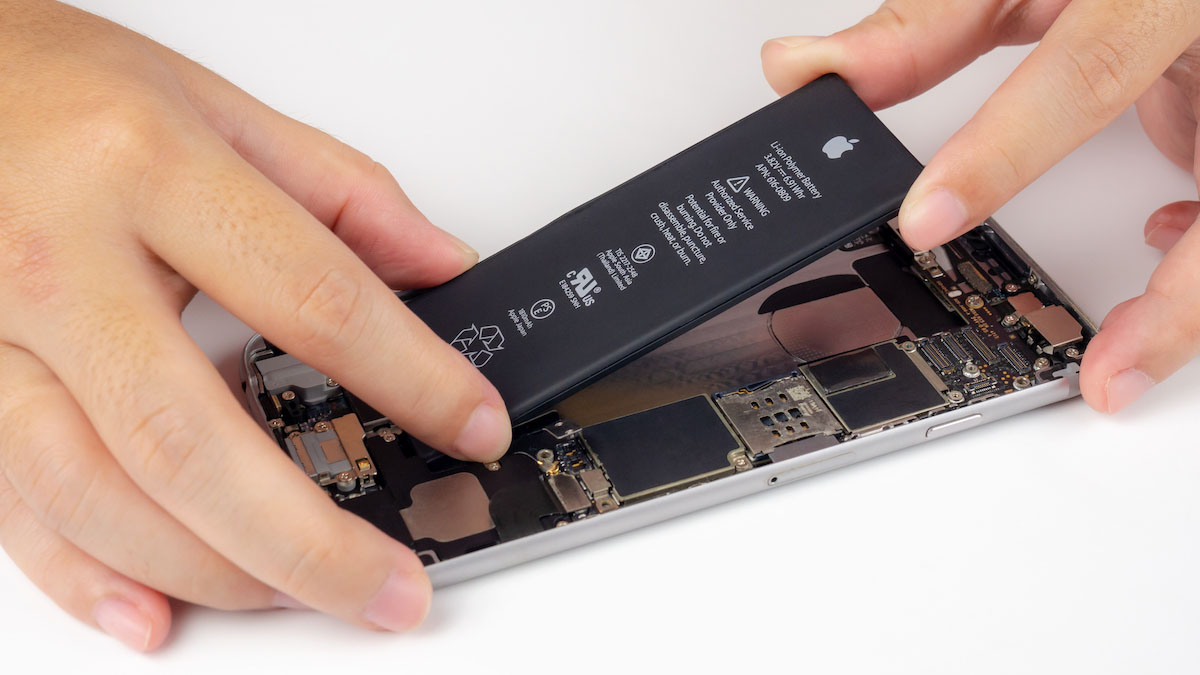Apple hits back at EU rules — says replaceable iPhone batteries are a bad idea

In the past couple of months you may have seen stories about the EU forcing phone makers to design phones in a way that lets users replace their own batteries. While a lot of this story's focus has been on Apple, it sounds like the company isn’t treating this legislation as any serious threat.
Despite some headlines you may have seen, the point of this law isn’t to mandate removable batteries — such as those you’d find in old-school Androids or older feature phones. Instead, the point is to ensure users are capable of replacing the batteries themselves, without needing anything other than “commercially available tools."
Apple has been hitting back at this, with Apple SVP Hardware Engineering John Ternus discussing the ruling in an interview with German YouTube channel Orbit. Ternus discusses that increased repairability is often at odds with long-term durability.
"You can make an internal component more maintainable by making it discrete and removable, but that actually adds a potential point of failure." He then added that by "using the data, we can understand which parts of the phone need to be repaired and which parts are actually better made so reliable that they never need to be repaired. It’s always a kind of balance."
It’s not surprising that Apple has this kind of philosophy. This is the same company that solders RAM and SSDs in a bunch of its machines, particularly MacBooks. That makes it nearly impossible to replace or upgrade them by yourself.
Repairability vs water resistance
Ternus also noted that better repairability can compromise water resistance — one thing customers often seem excited about after experiencing it first hand. Sometimes after the phone has been submerged for multiple days.
You can make an internal component more maintainable by making it discrete and removable, but that actually adds a potential point of failure.
John Ternus, Apple
"To get this level of water resistance, there are a lot of high tech adhesives and sealants to make everything waterproof," Ternus said. "but of course it makes the opening process a little more difficult. So there is a balance."
Get instant access to breaking news, the hottest reviews, great deals and helpful tips.
This is rather a valid point, since those seals can be affected by any number of external factors. Anyone who’s been denied an in-warranty repair because of alleged water damage, despite the phone being IP68 rated, will likely have been told as such during arguments with the customer service rep. Or maybe that was just my experience with Samsung.
Plus, without access to Apple’s adhesives and sealants, it’s not as though people could easily reseal the phone themselves. Then again, water resistance and replaceable batteries are not mutually exclusive. The Samsung Galaxy S5, for instance, had an IP67 water resistance rating and let you swap out the battery in a few short seconds — no tools required
iPhone repairability is already on the rise — but is it enough?
Ternus also noted that Apple has taken measures to make the iPhone easier to repair in general, which likely includes the battery. The iPhone 14 and iPhone 14 Plus have what’s called “mid-body architecture” which allows the phone to be opened up from the front and back — giving easier access to different internal components. It’s rumored that this design will also be coming to the iPhone 15 Pro and iPhone 15 Pro Max later this year.
However, this architecture didn’t stop the cost of a replacement battery rising from $89 on the iPhone 13 series to $99 on the iPhone 14 series. The cost of a new back glass plate did drop by $180 between the two subsequent generations, though, and battery replacement is free if you have AppleCare Plus.
While not mentioned, Apple has also launched the self-service repair program, which allows people to fix their devices at home — iPhones included. The cost of an iPhone 14 battery repair is $53.47 if you return your old battery for recycling. You also need to account for the cost of tools, which you can rent for 7 days at the cost of $49.
Of course that probably wouldn’t fly with the EU, since the legislation specifically states that repairs should be carried out by commercially available tools, rather than specialized ones. Unless the specialized tools are provided free of charge. It also forbids “proprietary tools, thermal energy or solvents” in the disassembly process.
Historically, Apple has been pretty fond of proprietary screws, though the DIY repair community is usually pretty quick to reverse engineer them. It’s also not the only offender in this category, even if it is the most well-known example.
Still, from the sounds of things Apple is gearing up to fight this new EU mandate in whatever way it can, even if that means finding loopholes and other ways to workaround the issue. Apple itself held off on adopting a common charger for as long as it could, and did plenty of complaining in the run up to the USB-C mandate being passed. Though in that instance, the company did roll over and accept its new lot very quickly.
Apple was never going to add pop-out removable batteries to the iPhone, but it would be nice to see more emphasis on repairability in phones that aren’t dirt-cheap Nokias or outliers like Fairphone.
The new EU rules aren’t supposed to officially roll out until 2027, so it’s going to be a while before we see how this plays out. Until then your easiest option for an iPhone battery replacement is a quick trip to the Genius Bar.
More from Tom's Guide
- iPhone 15 event date just leaked — here's everything we know
- iPhone 15 Pro Max price could be $1,299 — here’s all the rumored upgrades
- Yikes! iPhone 15 will reportedly have 'lower demand' than iPhone 14

Tom is the Tom's Guide's UK Phones Editor, tackling the latest smartphone news and vocally expressing his opinions about upcoming features or changes. It's long way from his days as editor of Gizmodo UK, when pretty much everything was on the table. He’s usually found trying to squeeze another giant Lego set onto the shelf, draining very large cups of coffee, or complaining about how terrible his Smart TV is.
